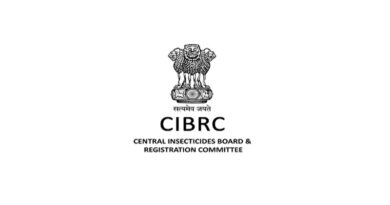Research and registration of aerial pesticide in China
31 August 2021, Beijing, CN: The development of aerial pesticides application in China is growing rapidly along with research and registration of such pesticides specially used for aerial application.
The key attributes for research on aerial application of pesticides focuses on the dilution stability, droplet size, anti-evaporation, anti-drifting, deposition, rain fastness, stability of mixed agents and adhesion properties of pesticides. These attributes are considered as a base for a standard product in the market.
Ultra-low volume registrations till date in China
| Product Name | Pesticide Category | Total content | Target crops | Infestation for Control |
| Azoxystrobin | Fungicide | 5% | Rice | Banded Sclerotial Blight |
| Tebuconazole | Fungicide | 3% | Rice | False Smut |
| lndoxacarb | Insecticide | 3% | Rice | Rice Leaf Roller |
| Nitenpyram | Insecticide | 5% | Rice | Rice Plant Hopper |
| Thifluzamide . Epoxiconazole | Fungicide | 6% | Rice | Banded Sclerotial Blight |
| Abamectin | Insecticide | 1.50% | Rice & Wheat | Rice Leaf Roller, Rice Spider |
| Abamectin . Thiamethoxam | Insecticide | 4% | Wheat | Aphid |
| Thiamethoxam | Insecticide | 3% | Wheat | Achid |
| Diazinon | Insecticide | 20% | Rice | Rice Stem Borer |
| Emamectin Benzoate . Indoxacalb | Insecticide | 6% | Rice | Rice Leaf Roller |
| Pyraclostrobin . Tebuconazole | Fungicide | 10% | Wheat | |
| Difenoconazole | Fungicide | 5% | Rice | Banded Sclerotial Blight |
| Emamectin Benzoate | Insecticide | 1% | Rice | Rice Leaf Roller |
| Thifluzamide . Epoxiconazole | Fungicide | 6% | Rice | Banded Sclerotial Blight |
| Chlorantraniliprole | Insecticide | 5% | Sugar cane, Rice, Com. | Sugar Cane Borer, Rice Leaf Roller, Rice Stem Borer, Corn Borer |
| Dinotefuran | Insecticide | 3% | Rice | Rice Plant Hopper |
Dilution stability
The dilution stability is an important indicator in pesticides when it comes to aerial application, which is generally used at low volume or ultra-low spray. The water consumption of conventional sprayers is 30-50 liters per mu, diluted at 3000-5000 fold, whilst the water consumption of spraying by aerial application is only 0.5-1.0 liter per mu, diluted generally at 30-100 fold. In the process of low volume or ultra-low spraying, the diluent’s precipitation, crystallisation and flocculation will decide if a drone nozzle may be blocked or not, which decides whether the aerial application can be perform correctly.
Droplet size
The droplet size in conventional spraying is usually 200 to 300μm. Smaller droplets can increase the target catchment. At the same time, smaller droplets will reduce the dosage and increase efficiency. Therefore, the droplet size for an aerial application needs to be smaller, usually at 10 to 50μm. For the control of leaf pests, the droplet needs to be generally 30 to 150μm; The droplet size for the control of plant disease needs to be generally 30 to 150μm.
Anti-evaporation and anti-drift capacity
Aerial application takes place at a certain height, which generally generates a downdraft during flying. Hence, the agent for an aerial application needs to have an anti-evaporation and anti-drift capacity. Under the airflow, the smaller droplets of an aerial application-oriented agent may suspend and drift in the air, which will result in a loss of the agent. This is not only a waste of the agent but causes pollution to the ambient environment, or even causes phytotoxicity.
Rain fastness
Rain fastness decides the retention ability of an aerial application-oriented agent adhering and spreading on the crops, as measured after a 2mm rain wash. This is also one of the key indicators of the performance of aerial application-oriented agents. The retention ability of the agent on the leaf surface is the key indicator of the efficacy of the agent. Longer retention improves the overall efficacy and control ability.
Stability of mixed agents
To improve the efficiency of an aerial application, a variety of pesticide formulations are often applied at the same time, which requires a higher compatibility among pesticide formulations. In the process of a mixed application, it is important to make sure that no layering, crystallization, flocculation, agglomeration and gelation happens within the cartridge, which will block the nozzle or reduce the pesticide effect. For this reason, experimentation should be carried out in the early stage to determine if mixing is possible or not.
In case of mixing, the agents should be mixed only at the time of spraying for the purpose to avoid the occurrence of instability, which may be caused by a mixture prepared already for some time.
With the application and popularization of new technologies, the Chinese farmer’s spraying methods are changing with time. The emergence of aerial application techniques has not only imposed new challenges to the type of formulations but has also provided new opportunities and new orientation in pesticide development. While speeding up research and learning from the existing experience of aerial applications in other countries, the Chinese formulation and adjuvant industry development is expected to grow rapidly and effectively.
Also Read: Bayer crop science, TAFE, Mahindra & Mahindra granted drone use permission















